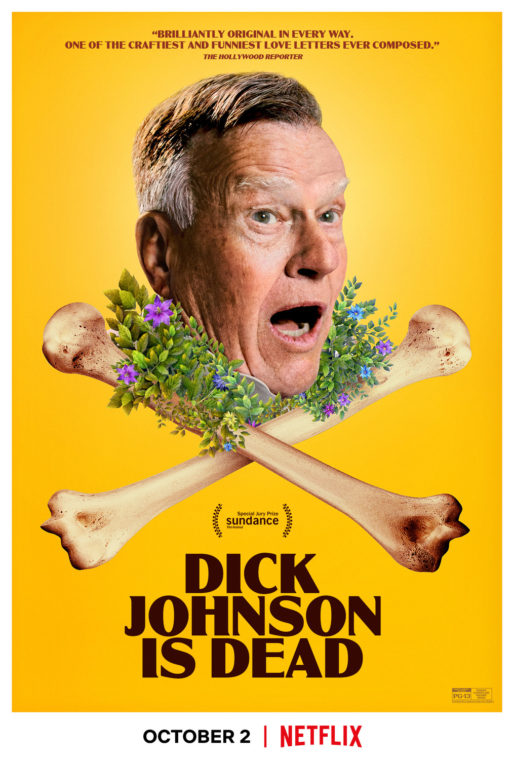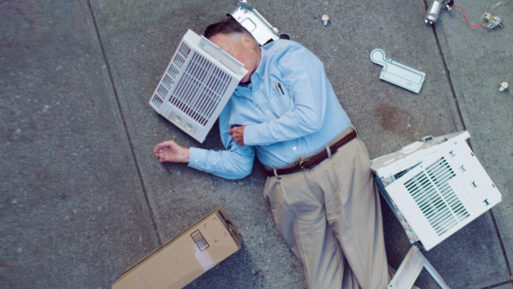 In the Netflix film “Dick Johnson is Dead,” documentary filmmaker Kirsten Johnson explores the process of coming to terms with her father’s looming death. When Dick Johnson begins double-booking clients at his psychiatry practice and forgetting everyday details, Kirsten and her family realize he can no longer live independently. She moves him into her one-bedroom apartment in New York, where the two of them to begin to navigate the tender but grueling experience of shifting into a new care dynamic.
In the Netflix film “Dick Johnson is Dead,” documentary filmmaker Kirsten Johnson explores the process of coming to terms with her father’s looming death. When Dick Johnson begins double-booking clients at his psychiatry practice and forgetting everyday details, Kirsten and her family realize he can no longer live independently. She moves him into her one-bedroom apartment in New York, where the two of them to begin to navigate the tender but grueling experience of shifting into a new care dynamic.
Both Johnson and her father are warm and lighthearted, and their mutual affection resonates throughout the movie. Dick Johnson gamely agrees to let Kirsten stage elaborate, theatrical death scenes for him: Throughout the movie, she films him “dying” from various causes, including a fall down the stairs, a construction accident, and a car wreck.
These “deaths,” however, are more of a framing device than the real core of the film. Most of the scenes are made up of sweetly comical behind-the-scenes footage: The stuntman demonstrating a fake heart attack, the crew members explaining to Dick Johnson how his fake blood apparatus works, Kirsten Johnson asking her father to move his arm a little to the right while he’s pretending to lie dead on the floor.

Kirsten Johnson staged elaborate “deaths” to deal with her father’s mortality.
Credit: Netflix
While the concept may seem bizarre or macabre, Johnson’s love for her father is deeply felt throughout the film. In one scene, she holds onto him with both hands as her crew films him walking down the sidewalk; as his stunt double “trips” and falls to the ground, she pulls him gently out of the way and kisses his forehead. Here, there seems to be a clear metaphor that perhaps lies throughout the film: In acting out these deaths, she is also, in some way, able to save him from them.
The tone of “Dick Johnson is Dead” is tender and funny, but it is not without heart-wrenching moments. Anyone who has cared for a parent or older loved one will be familiar with some of the tense, emotional conversations Johnson captures on film: explaining to her father that they’ve sold his car, helping him say goodbye to the home he raised her in, reminding him where he is when he can’t piece together new surroundings. Even in benign, lighthearted moments, extended closeups of Dick Johnson’s face hint at the profound vulnerability that comes with memory loss and physical decline.
Still, the overall feeling of the film is resoundingly joyful. Dick Johnson himself exudes happiness and gratitude, clearly delighting in the attention of his daughter and the nearness of his family. Kirsten Johnson’s focus is on the gifts brought not just by life, but by death — the preciousness of fleeting moments and the hope of final peace and reunion. The film is punctuated with elaborate, cheeky visions of heaven in which Dick Johnson hangs out with dead celebrities, dines from chocolate fountains, and dances with his beloved wife. Though deliberately campy, these scenes embody the sense of optimism and hope that permeates the film. Pondering the loss of her mother and the decline of her father, Johnson muses:
It would be so easy if loving only gave us the beautiful. But what loving demands is that we face the fear of losing each other. That when it gets messy, we hold each other close. And when we can, we defiantly celebrate our brief moments of joy.
“Dick Johnson is Dead” is a funny, deeply poignant film that will resonate deeply with anyone who has dealt with the loss — real or impending — of someone they love.

 “Dick Johnson is Dead” Directed by Kirsten Johnson
“Dick Johnson is Dead” Directed by Kirsten Johnson


 First the Wealth Gap, Now the U.S. Has a Growing Health Gap
First the Wealth Gap, Now the U.S. Has a Growing Health Gap
 How to Comfort A Dying Loved One
How to Comfort A Dying Loved One
 Our Annual Seven Holiday Gifts for Someone Who Is Grieving, 2024 Edition
Our Annual Seven Holiday Gifts for Someone Who Is Grieving, 2024 Edition














